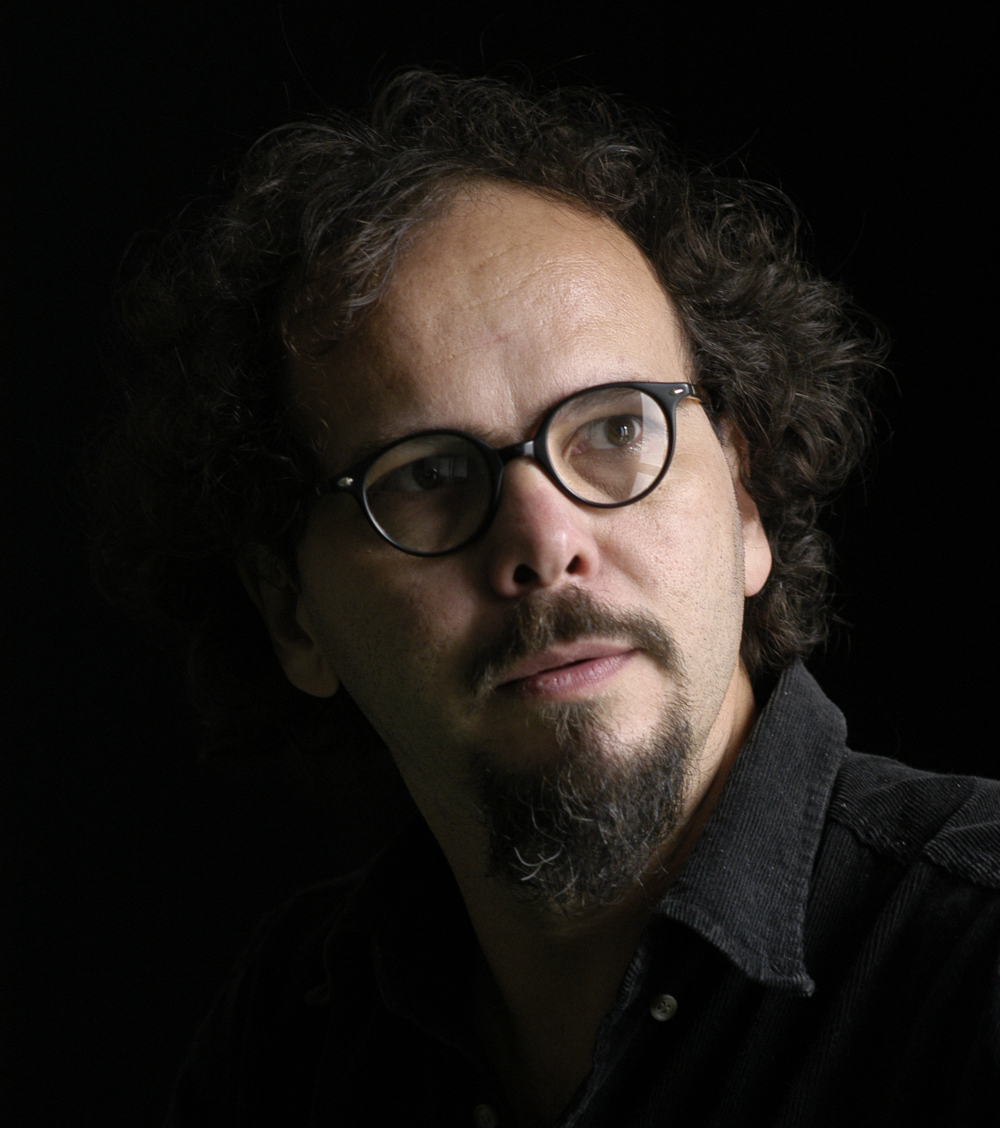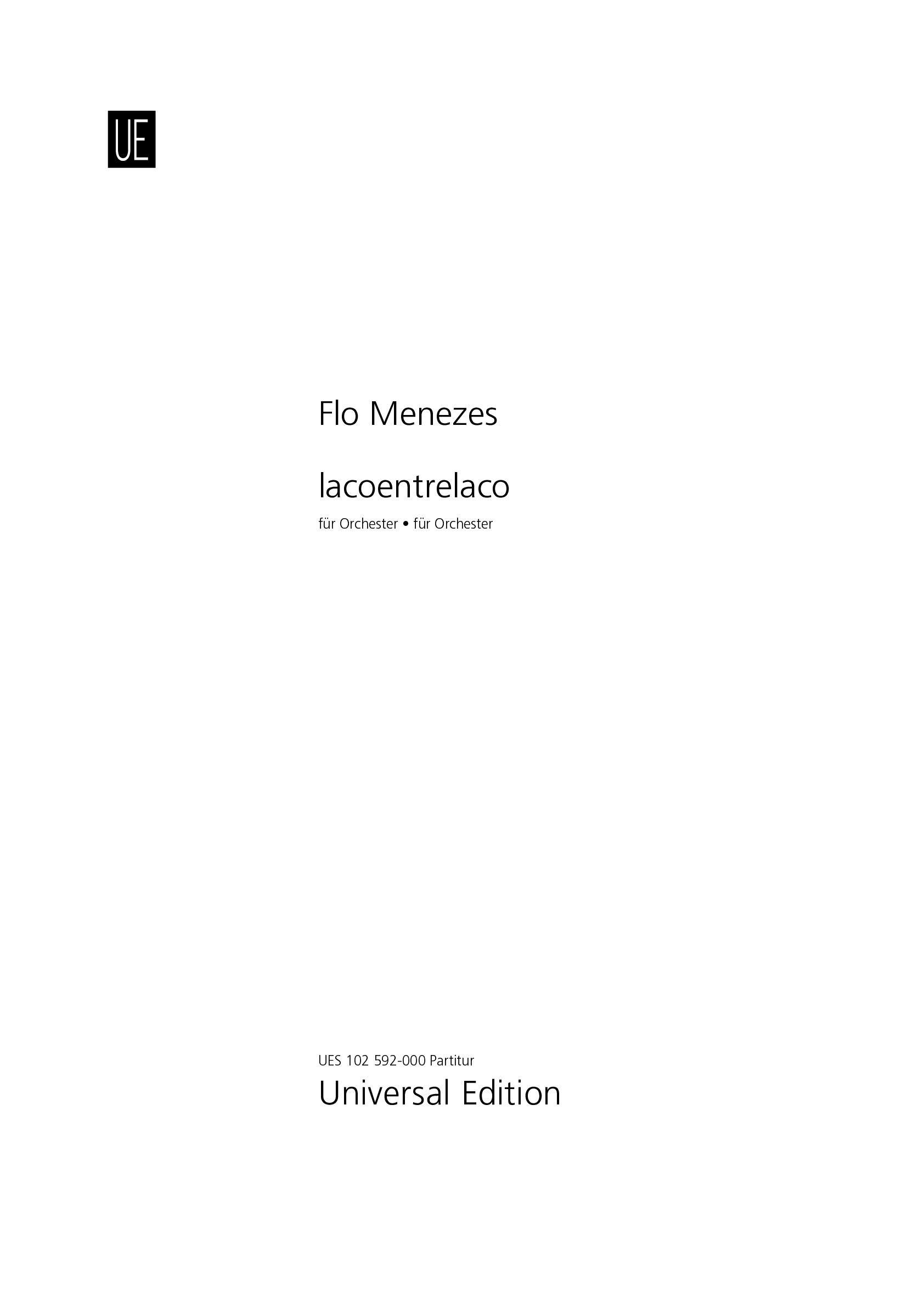

Flo Menezes
laçoentrelaço
Short instrumentation: 3 3 3 3 - 4 3 4 1, perc(3), cel, hp, str
Duration: 15'
Instrumentation details:
11th flute
12th flute
13th flute
cor anglais
19th oboe
20th oboe
bass clarinet
6th clarinet in Bb
7th clarinet in Bb
3rd bassoon
4th bassoon
contrabassoon
15th horn in F
16th horn in F
17th horn in F
18th horn in F
trumpet
trumpet
trumpet
trombone
trombone
trombone
bass trombone
tuba
percussion
percussion
percussion
celesta
harp
violin I (12 players)
violin II
viola (10 players)
violoncello
double bass (6 players)
laçoentrelaço
Printed/Digital
Translation, reprints and more

Flo Menezes
laçoentrelaçoOrchestration: für Orchester
Type: Dirigierpartitur
Sample pages
Audio preview
Video
Work introduction
laçoentrelaço is a neologism: laço means loop; entre means between; entrelaço is a synonym of entrelace and means interlacement (from entrelaçar = to intertwine, interweave, interlace, intermingle). The title is therefore a kind of “Joycean” word: “loopbetweenloop”, “interlaceinsideinterlace”...
The composition was written down between May and August 2013 (a slight revision in some dynamics was made afterwards in May 2016). On 11 May I undertook my first speculations around its harmonic structure going from a harmonic entity of my recent piano piece Gefäß des Geistes
(2011), slightly varying it and deriving from it three main Harmonic Entities for laçoentrelaço.
A complex directional planning of interlacing gives rise to the main harmonic structuring of the whole piece: each one of these three main Harmonic Entities was also submitted to my techniques of Proportional Projections, achieving other spaces in the general register of pitches. Different kinds of connections between those harmonic spaces (projections) and their textures can then be heard. It is no question here to explain all details of such an elaboration, but it is at least significant to refer to the general conception of the work and to how I could derive the whole structure of the piece, and under this point of view the focuses on how to link juxtaposed ideas of an orchestral fabric was extremely important for me.
In fact, laçoentrelaço is also a kind of “study of connections”. Pondering about the possibilities of connections between musical ideas, I stipulated five types of possible connections between two juxtaposed musical ideas:
- 1. idea A sounds and is followed by idea B, but idea A fades out after the beginning of B;
- 2. idea A sounds and during A we hear the idea B gradually fading in until it is totally constituted, at which point idea A
- suddenly stops to sound;
- 3. idea A sounds and during A we hear the idea B gradually fading in until it is totally constituted, at which point idea A
- gradually begins to fade out, so that we have a kind of “crossfade” between ideas A and B;
- 4. idea B begins just when idea A stops, so that we actually have no “connection” between both ideas, but rather a
- juxtaposition of two structures with a kind of temporal “fissure” between both ideas;
- 5. this “fissure” increases and gives rise to a silence between both ideas A and B, separating them in time.
